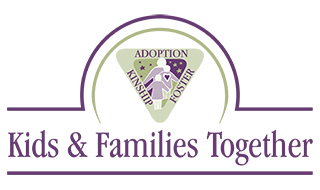

- This event has passed.
LGBTQIA+ Pride Month
Why Do We Celebrate PRIDE MONTH?
June is Pride Month and it’s an opportunity for the LGBTQ+ community and allies to celebrate identity and show their pride in who they really are. Pride is necessary because most of the LGBTQ+ community went through their formative years in silent suffering. Adolescents in the LGBTQ+ community suffer from exponentially high suicide rates. The Trevor Project estimates that at least one LGBTQ+ youth between the ages of 13–24 attempts suicide every 45 seconds in the U.S. Because many LGBTQ+ youth report attempting suicide multiple times in a given year, this estimate likely underrepresents the extent of how often LGBTQ+ youth attempt suicide in the U.S.
LGBTQ+ youth are not inherently prone to suicide risk because of their sexual orientation or gender identity but rather placed at higher risk because of how they are mistreated and stigmatized in society. No other identity can cause an individual to be afraid of losing their family and friends by simply revealing who they are. This fear is very real and sometimes never goes away. To some in the LGBTQ+ community, they are afraid of losing their employment, their family, their friends and their lives for expressing their sexual orientation or gender identity. Thankfully, in recent years, we have seen many adolescents coming out of the closet far earlier than before, which just highlights the tremendous progress the LGBTQ+ community has gained in establishing acceptance and making it safe for young people to express their identity with less fear.
The History of PRIDE MONTH
There were some organizations and movements for LGBTQ+ rights that started as early as 1924 but the first Pride Event occurred in 1970. However, the event that triggered the first Pride Event took place exactly one year prior. On June 28, 1969, the New York City Police Department (NYPD) raided the Stonewall Inn, a bar in Greenwich Village that catered specifically to the LGBTQ+ community. The New York City Mafia owned the Stonewall Inn and other similar establishments. The State Liquor Authority and the New York Police Department regularly raided bars that catered to gay patrons. Where the law saw deviance, the Mafia saw a golden business opportunity. To operate the Stonewall and its other gay bars, the Mafia bribed the NYPD to turn a blind eye to the “indecent conduct” occurring behind closed doors. They also blackmailed wealthy gay patrons by threatening to “out” them. Historian David Carter presented information that the owners of the Stonewall Inn were blackmailing wealthier customers who frequented the bar. Some members of the NYPD, reportedly, would receive kickbacks from the liquor sales of the Stonewall Inn, but they did not receive kickbacks on the extortions scheme, so the members of the NYPD decided to close the Stonewall Inn permanently.
At approximately, 1:30 a.m., several members of the NYPD arrived at the Stonewall Inn and announced “Police! We’re taking the place!” Police began to line up the patrons and check their identifications. Patrons were required to wait in line outside of the building for 15 minutes while the patrol vehicles arrived. This created an increased sense of tension for the bar patrons. Their identities were safe in the bar where they could be themselves. They were now forced to confront their fear of identification as they stood and waited in front of the world. However, the patrons and police did not get the response they were expecting from the crowd of people who began to assemble. There was a large population of LGBTQ+ individuals, and it was the first time that the crowd came together in a show of force and solidarity. A scuffle broke out and the NYPD began to break up the crowd with force and the crowd fought back. The situation turned into a riot. The NYPD Tactical Patrol Force arrived to free the police who were trapped inside the bar. The NYPD then turned its attention onto the ever-growing crowd. The protestors fought back and by 4:00 a.m., the streets had mostly been cleared.
On the one-year anniversary of the police raid and ensuing riot, the Christopher Street Liberation Day occurred in New York City with corresponding Gay Pride Marches in Los Angeles and Chicago. Pride had arrived. It soon spread to major cities throughout the United States. Over the years, since 1970, and to some early protestor’s consternation, Pride shed its violent birth and replaced it with a more jovial celebration of the LGBTQ+ community. However, the meaning of Pride remains the same. It is an opportunity to gather and show the LGBTQ+ Community’s force and identity.
Why the RAINBOW flag?
This short clip from a Chicago based news station explains the history and evolution of the rainbow flag: History of the Pride Flag – YouTube
Resources/Action Items
Memorial Day
- Memorial Day Weekend Events and Activities Around Ventura County — Conejo Valley Guide | Conejo Valley Events
- Memorial Day 2023: Facts, Meaning & Traditions | HISTORY
- Remembering LGBTQ veterans on Memorial Day | News | Seattle Pride
- Memorial Day – Over 150 Years of Remembrance (U.S. National Park Service) (nps.gov)
- Honoring LGBTQIA+ Servicemembers on Memorial Day | News | Seattle Pride
- Tomb of the Unknown Soldier (defense.gov)
- Changing of the Guard at Tomb of the Unknown Soldier (Female Sentinel) Bing Videos
Crisis Support Resources:
Crisis Intervention and suicide prevention services for LGBTQIA+ youth
Pride History:
- 7 Surprising Facts About the Stonewall Riots and the Fight for LGBTQ Rights (history.com)
- Pride Month 2023: Origins, Parades & Dates | HISTORY
- Pride Month 2023: Origins, Parades & Dates | HISTORY
Children’s Books:
- 59 Children’s Books That Celebrate Pride – LGBTQ Book List for Kids – No Time For Flash Cards
- » Celebrity Interviews, Parenting Tips & Entertainment10 Children’s Books To Read For Pride Month – (celebrityparentsmag.com)
LGBTQIA+ Organizations:
Ventura County
Worldwide
 Kids and Families Together
Kids and Families Together